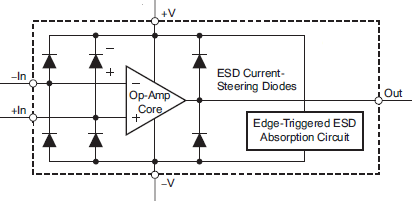Other Parts Discussed in Thread: LM339
Hello,
I was reading the tread titled: TINA/Spice/TLV3201: TINA Spice model shows output inverting with large signal, and it looks like the Spice Model for the TLV3201 was either updating or going to get an update to reflect the use of ESD diodes in the part. Has this been completed because it seems that the models available on the TLV3201 web page still show inverting outputs, which would suggest the model hasn't been updated yet.
Additionally, in bench testing the TLV3201, it seems as though there is a current sensitivity to whether or not the output will exhibit an inversion result. When stimulating the negative input, no inversion result was seen regardless of overdrive polarity. When stimulating the positive input, no inversion was seen when over driving in the positive direction, but an inversion was seen when over driving the positive input in the negative direction (below the ground reference) with more than 5mA. Is this a function of how the ESD diodes are setup inside the part? Is it expected that there should be a current dependency and non-symmetrical results when looking for inversion events?
Is it possible to see the layout of the diodes inside the TLV3201, or is there another similar part in the family that has the same diode configuration?
Thank you!
Tyler



